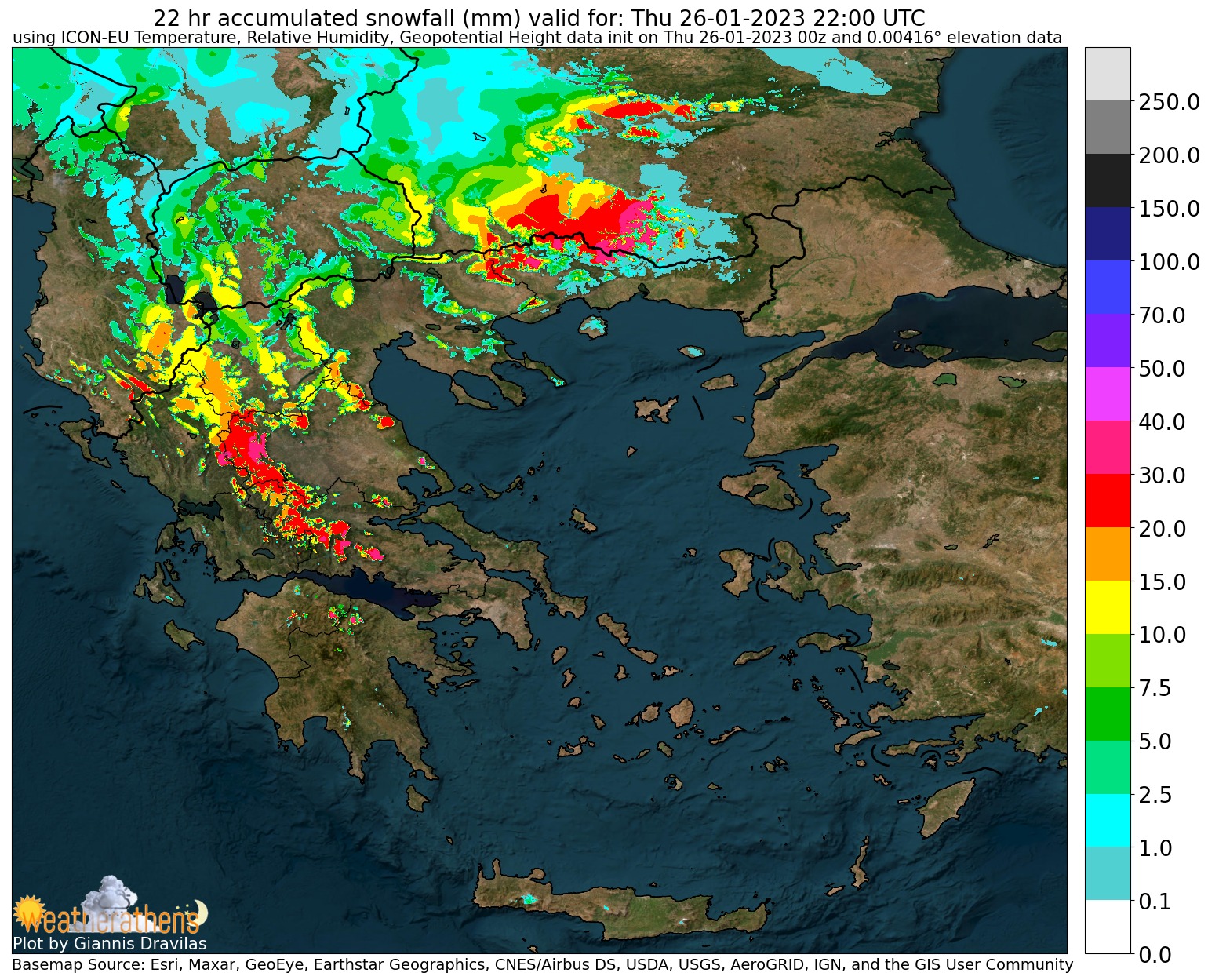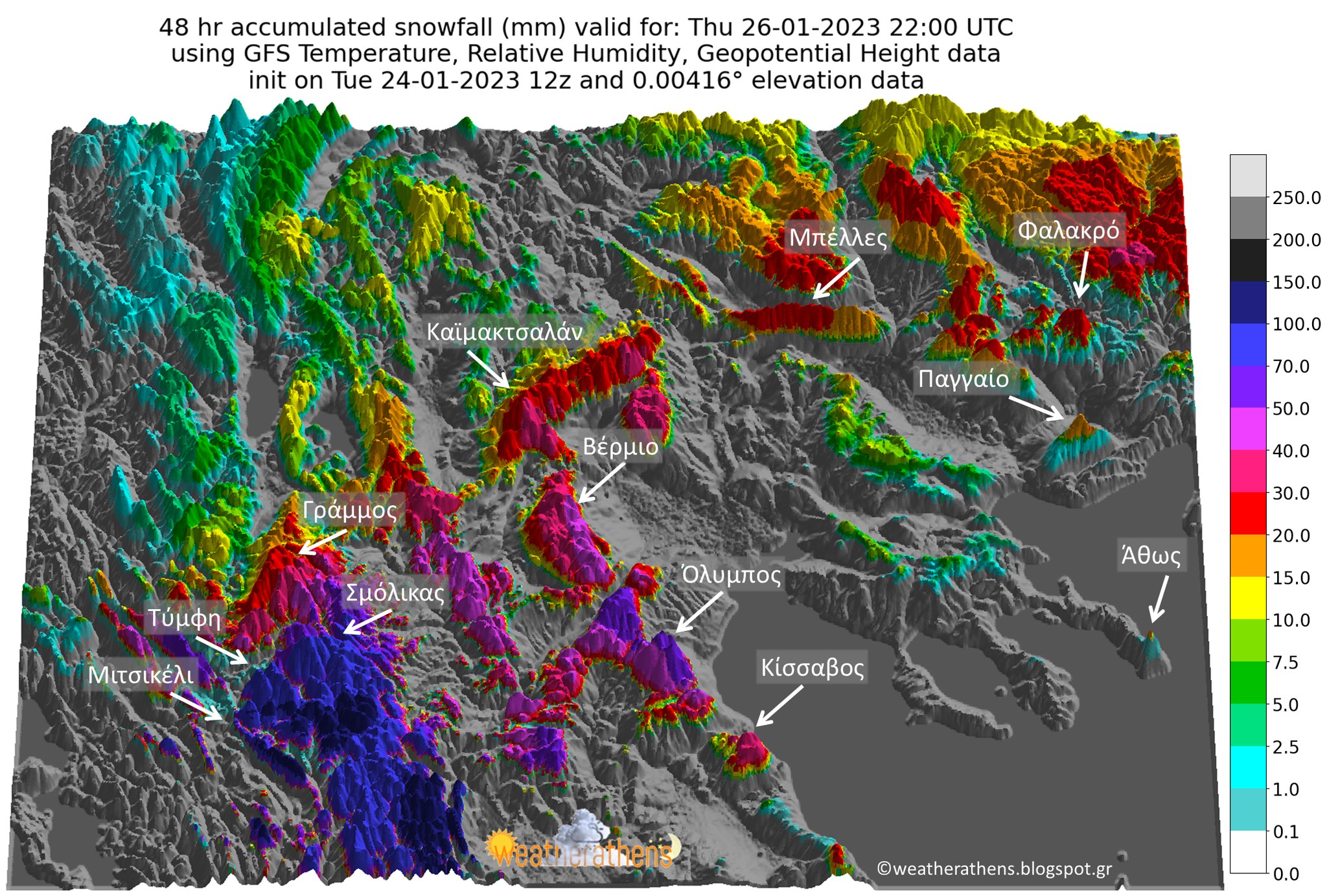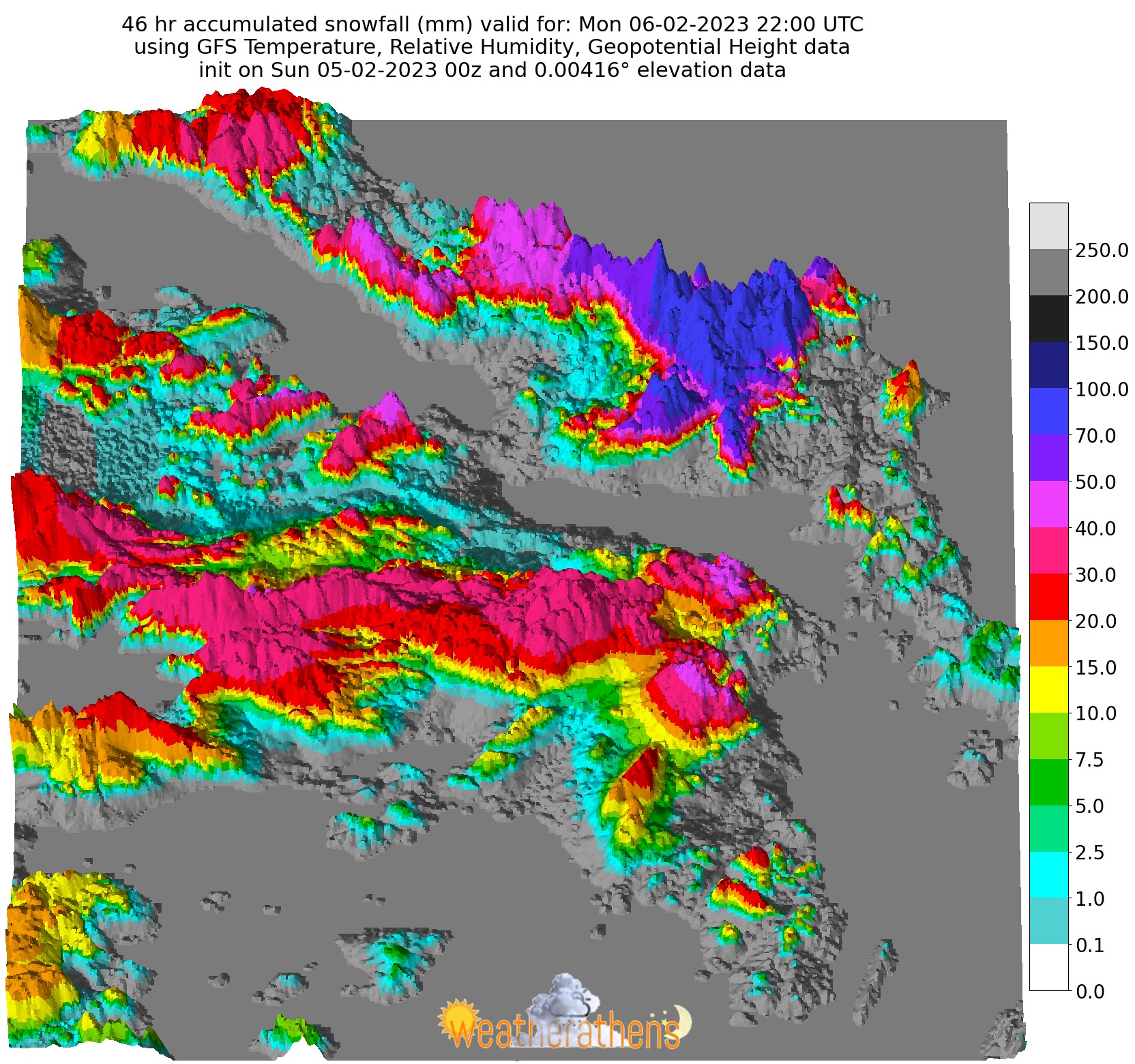Snow Forecasting Model
The Snow Forecasting Model is an innovative, high-resolution snowfall prediction system developed specifically for Greece. With a spatial resolution of 400 meters, the model provides detailed and precise snowfall forecasts, covering Greece and its neighbouring countries.
The model makes use of temperature, humidity, geopotential height (at various levels) and precipitation data from numerical weather models such as ICON-EU, GFS and GEM. This data is used as input to an algorithm that accounts for snow melting processes, identifying areas likely to experience snowfall during approaching cold fronts.
The key feature of the model is its complex mapping process. Potential snowfall regions are projected onto a high-resolution topographic grid with a spatial resolution of 400 x 400 meters. This grid consists of approximately 6 million points covering Greece and its neighbouring countries. The model's vertical dimension consists of 400 levels (vertical resolution of approximately 10 meters), so the resulting three-dimensional grid encompasses a total of 2.5 billion points. By repeating the process over multiple time steps, a cumulative snowfall map is created, as demonstrated in the examples below.
The model's successful operation relies on careful design and implementation, supported by substantial computational resources. By integrating high-resolution meteorological forecasts with even more detailed topographic data, the system accurately models local weather patterns, producing highly reliable results.
Since January 2022, the Snow Forecasting Model has been used operationally by Weatherathens. It's essential to acknowledge that the model's performance is influenced by various factors, extending beyond its architecture. Temperature and humidity forecasts at various altitudes in the lower troposphere, as well as precipitation forecasts, as generated by numerical weather models, play an important role in shaping the results. Additionally, the calculation of the minimum snow-melting altitude, constrained by the vertical resolution of the initial data and abrupt atmospheric changes, along with the inherent approximations of the algorithm, significantly contribute to the final outcome.
It is important to note that the term “model” in this context differs from its traditional association with numerical weather prediction models. Instead, it represents a comprehensive process of assimilating large volumes of forecast data and real-world data to simulate atmospheric conditions with high precision. The ultimate goal is to make snowfall predictions accessible and understandable to the public, translating complex meteorological data into user-friendly, actionable information.


